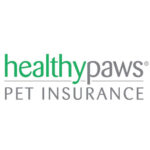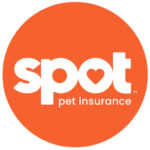Best Pet Insurance For Chow Chows In 2025
In my professional judgment, Healthy Paws is the optimal choice for insuring Chow Chows.
We’ve saved shoppers an average of $350 per year on their pet insurance.
Chow Chows owners often think about their dog’s health. Since Chow Chows are purebred, they’re at a higher risk of developing genetic health issues compared to mixed breeds. Unfortunately, 80% of pet owners are unable to pay an unexpected $500 vet bill out of pocket. Pet insurance can help reduce that financial strain.
In this review, we’ll explore top pet insurance options for Chow Chows to help you choose the right coverage. Pet insurance works like human health insurance by offering better care and lowering out-of-pocket costs. The bonus? It’s far more affordable than private health insurance.
Best Pet Insurance Companies For Chow Chows, 2025
There are several pet insurance providers specializing in Chow Chows, each offering comparable levels of pet care and financial protection with unique features. What works for one Chow Chow may not be optimal for another.
Here’s our assessment of the best pet insurance companies tailored for Chow Chows.



Comparison Of The Best Pet Insurance Companies For Chow Chows
In our review of pet insurance companies tailored for Chow Chows, we've identified several standout contenders, each offering specific benefits.
| Overall Rating | Best For | Waiting Period | Reimbursement % | Benefit Limit | Get A Quote | |
|---|---|---|---|---|---|---|
| Healthy Paws |
|
Overall |
15 days accidents/illness |
70%, 80%, 90% |
Unlimited annual and lifetime |
Instant Quote |
| Lemonade |
|
Cheap |
2 days accidents, 14 days illness |
70%, 80%, 90% |
$5,000 to $100,000 annaully |
Instant Quote |
| ManyPets |
|
Puppies |
15 days accidents/illness |
70% or 80% |
Unlimited annual and lifetime |
Instant Quote |
| Pumpkin |
|
Older Dogs |
14 days accidents/illness |
90% |
$10,000, $20,000 or unlimited |
Instant Quote |
| Spot |
|
Multiple Pets |
14 days accidents/illness |
70%, 80%, 90% |
$2,500 to unlimited |
Instant Quote |
Our Methodology
Judgments and ratings were based on assessments of insurer websites, customer feedback, reviews from various sources, and personal experiences with pet insurance.
Quotes Analyzed
Years Of Industry Experience
Brands Reviewed
Research Hours
Detailed Reviews Of The Best Chow Chow Insurance Companies
Best Overall
Key Statistics
Why We Like Them
⇅Healthy Paws earns its reputation as the best pet insurance by offering unlimited claim payouts and avoiding per-incident maximums or caps. This ensures you won’t have to make tough choices about your pet’s care due to insurance restrictions. Their policy is straightforward, without costly extras, and they welcome visits to any licensed veterinarian. Claims are easily submitted through their mobile app or website and are typically processed within two days.
Benefits & Drawbacks
⇅- There are no ceilings on annual or lifetime payouts.
- Receive a refund if returned within 30 days.
- In general, we process most claims within a span of two days.
- Payment directly to the vet is a viable option. ✓
- A routine health assessment is not available. ✘
Runner-Up For Best Overall
Key Statistics
Why We Like Them
⇅Lemonade was identified as the most cost-effective pet insurance option for Chow Chows. Unlike Healthy Paws, Lemonade offers coverage limits ranging from $5,000 to $100,000 per year, with premiums rising based on the chosen limit. Their standard policy covers accidents, illnesses such as cancer and heart disease, common conditions like broken bones, and hip dysplasia in older Chow Chows. Like many insurers, Lemonade does not cover preexisting conditions, dental ailments, behavioral issues, or elective procedures.
Benefits & Drawbacks
⇅- Opt for a wellness package.
- Two-day waiting period for accident insurance.
- You can enjoy a 10% markdown by bundling pet insurance with Lemonade's home, renters, or car insurance. ✓
- There's no continuous pet telehealth support available.
- There's an extra charge for including vet examination fees in your policy.
- There is no insurance for prescription food or microchipping. ✘
Best For Puppies
Key Statistics
Why We Like Them
⇅ManyPets offers the most favorable insurance coverage for puppies. Pre-existing conditions do not affect premiums, and treated conditions may qualify for coverage after 18 months. Unrelated conditions are still eligible for insurance. Young Chow Chows, like all puppies, are prone to illnesses such as poisoning, ingesting foreign objects, and accidents due to their energetic behavior. Insuring them early minimizes the chances of encountering exclusions for pre-existing conditions later in life.
Benefits & Drawbacks
⇅- Available across 40+ states
- Takes care of vet examination costs for sickness and accident-related visits.
- Includes elective health benefits. ✓
- Pet telehealth services are not accessible 24 hours a day, 7 days a week.
- Pet behavioral therapy is not part of the coverage.
- Insurance does not pay for alternative therapies. ✘
Best For Older Dogs
Key Statistics
Why We Like Them
⇅As Chow Chows age, they often develop genetic conditions such as cruciate ligament issues and hip dysplasia, which can require costly treatments. Pumpkin pet insurance does not impose waiting periods for these conditions and covers veterinary exam fees if your older Chow Chow needs treatment. They offer a variety of coverage options for a range of Chow Chow health issues, including surgeries and dental problems, with three deductible choices and a standard reimbursement rate of 90%.
Benefits & Drawbacks
⇅- Opt for wellness plan at your discretion
- Price breaks for insuring multiple pets together.
- Get 90% of your money back on dogs and cats over 8 weeks old. ✓
- There's no constant pet telemedicine service.
- Accident coverage alone isn't available. ✘
Best For Multiple Pets
Key Statistics
Why We Like Them
⇅Chow Chow owners often have multiple pets because they are so sociable. Spot provides a 10% discount for insuring more than one pet, resulting in considerable savings. Their optional preventive care plan covers wellness services such as an annual vet visit, fecal test, and teeth cleaning, and includes coverage for certain vaccinations. Spot offers a 30-day money-back guarantee if you’re unhappy with the coverage or service. They also reimburse up to 90% of eligible vet expenses and provide a 24/7 vet helpline. Additionally, you can visit any U.S.-licensed veterinarian or specialist.
Benefits & Drawbacks
⇅- Discusses microchip coverage
- Available: a deductible as low as $100.
- Provides continuous pet telehealth assistance. ✓
- Accidents require waiting for 14 days, whereas leading competitors manage with only 2 days. ✘
Average Cost Of Pet Insurance For Chow Chows
| Company | Deductible | Annual Reimbursement % | Monthly Price | Age of Dog |
| Healthy Paws | $500 | 70% | $70.30 | 5 year old |
| Lemonade | $500 | 70% | $40.00 | 5 year old |
| Spot | $500 | 70% | $73.34 | 5 year old |
| Healthy Paws | $500 | 80% | $36.52 | 1 year old |
| Lemonade | $500 | 80% | $20.67 | 1 year old |
| Spot | $500 | 80% | $53.80 | 1 year old |
| Healthy Paws | $500 | 70% | $37.64 | 3 month old |
| Lemonade | $500 | 70% | $29.13 | 3 month old |
| Spot | $500 | 70% | $83.12 | 3 month old |
Average Cost Of Typical Vet Procedures
| Typical Vet Procedure | Average Cost Of Procedure |
| Puppy vaccinations | $75-100 |
| Flea & tick prevention | $40-200 |
| Heartworm prevention | $24-120 |
| Spay or neuter surgery | $200-800 |
| Annual exam | $240-600 |
| Teeth cleaning | $200-500 |
| Microchip | $40 |
Average Cost Of Emergency Vet Procedures
| Emergency Pet Procedure | Average Cost Of Procedure |
| General consultation/exam | $100-$150 |
| General bloodwork | $80-200 |
| X-rays | $150-$250 |
| Ultrasound | $300-$600 |
| 1-2 day hospitalization | $600-$1,700 |
| 3-5 day hospitalization | $1,500-$3,500 |
| Wound treatment & repair | $800-$1,500 |
| Emergency surgery | $800-$2,500 |
| Oxygen therapy | $500 |
Common Health Issues For Chow Chows
Like many purebred dogs, Chow Chows are often susceptible to health problems. Over the years, a lack of attention to genetics by some breeders has allowed certain health issues to spread throughout the Chow Chows breed. Consequently, Chow Chows are more likely to develop genetic conditions than other dogs.
Here are some common health issues Chow Chows face:
- Entropion (an eyelid condition)
- Hypothyroidism
- Patellar Luxation
- Skin Problems (e.g., hot spots, pyoderma)
- Gastric Dilatation-Volvulus (Bloat)
- Dental Issues (e.g., dental crowding)
Is Pet Insurance Worth It For Chow Chows?
Pet insurance covers unexpected vet bills. Many pet owners handle their pet’s medical costs themselves, but most cannot afford a $1,500 emergency visit. A good pet insurance plan could make a big difference. It allows you to make health decisions for your pet without worrying about finances. The value of pet insurance depends on your expectations. If your pet has an ongoing illness and you want help with those expenses, you’ll likely be disappointed, as preexisting conditions aren’t covered. However, if you choose a policy that meets your needs and budget, you’ll likely see its worth.
How To Find The Best Pet Insurance Company For You
Pet insurance plans vary in cost and type depending on the company, making it hard to decide which one to choose. Before you apply for coverage, use these tips to help find the best plan for your pet.
Check Whether Your Pet Is Eligible
Insurance for puppies and kittens usually requires them to be at least 6 to 10 weeks old, varying by insurer. Senior pets may not qualify for initial enrollment or may be limited to accident coverage. After enrollment, most plans ensure lifelong coverage with regular premium payments.
Research What’s Covered
Pet insurance generally covers surgery, hospitalization, and medication if your pet gets sick or injured. However, some services come with extra charges or are excluded altogether. For instance:
- Exam fees: Your dog’s broken leg might be covered for surgery and medication, but not the vet exam.
- Alternative treatments: Some policies cover things like acupuncture, while others charge extra.
- Behavioral therapy: Not all policies cover treatments for issues like aggression.
- Prescription food: Some plans don’t pay for vet-prescribed diets.
- Dental care: Policies vary on dental coverage, and some may only cover issues like gingivitis if your pet had a recent cleaning. Wellness plans may cover routine cleanings.
Pre-existing conditions, cosmetic surgeries, and breeding costs are typically not covered.
Decide How Much Coverage You Want
The majority of pet insurance plans cap annual payouts, although some don’t limit them. It’s your decision how much coverage provides you with peace of mind for paying vet bills. If your pet is in good health, you might go years without needing anything beyond routine care. However, unforeseen surgeries or serious illnesses could result in thousands of dollars in costs.
Understand Reimbursements And Deductibles
Many pet insurance plans will cover a portion of your vet bill, usually with choices like 70%, 80%, or 90% reimbursement when you sign up.
Some plans pay a standard fee for treatments, which could be less than your vet’s charge, and you’ll need to cover the difference.
Most plans also require a deductible, which is the amount you pay before coverage starts. Common deductible options range from $100 to $250 or more. Some plans require a deductible for each condition, while others reset annually.
Lower deductibles and higher reimbursement percentages lead to higher premiums, while higher deductibles and lower reimbursement percentages typically reduce premiums.
Check Waiting Periods
Most insurance plans include short waiting periods after purchase, typically around 14 days, before they cover general accident and illness treatments. During this period, medical expenses are not covered. Some plans have longer waiting periods for certain conditions, such as cruciate ligament injuries—a prevalent orthopedic problem in dogs. These ligaments play a key role in knee stability, and damage can severely affect a dog’s ability to walk.
Examine Extra Costs
Some pet insurers include routine services like vet check-ups and vaccinations in their plans. Before deciding, calculate if the added cost is worth it by comparing the annual premium of the wellness plan with your typical yearly expenditure on covered services. Check the specifics, as what qualifies as “wellness” coverage varies among insurers.
Compare Quotes
The expense of pet insurance varies depending on the insurer and the coverage level you select. Some pet insurers offer discounts, such as reduced rates for covering multiple pets. However, a discount doesn’t guarantee it’s the best option. To determine the most suitable pet insurance, compare quotes from several plans with comparable coverage amounts, deductibles, and reimbursement caps.
Factors That Impact Cost Of Your Pet Insurance Policy
Like your health insurance, the cost of pet insurance varies based on:
- Your location. The price of veterinary care in your area impacts your insurance rates.
- Your pet’s age. Older pets typically have higher premiums because they are more likely to need medical attention.
- Your pet’s breed. Some breeds are more prone to health conditions. Bulldogs and Boston terriers often face breathing difficulties, while larger breeds such as German Shepherds have a higher chance of developing hip dysplasia, which can influence your premium.
- Deductibles and coverage. A lower deductible means the insurance starts paying sooner, but it also raises your premium. For instance, a $100 deductible will cost more in premiums than a $500 deductible.
FAQs
Is pet insurance cheaper for purebred dogs?
The likelihood of costly genetic health problems in purebred dogs often results in higher insurance costs compared to mixed-breed dogs.
What is the average cost of owning a Chow Chow?
Expect to spend around $3,000 in the first year on vaccinations, food, grooming, and insurance, with costs lowering to about $1,900 annually thereafter.
What insurance do you need for a dog?
Dog owners are advised to obtain pet insurance to handle vet bills and safeguard their dog’s health.
Sources
⇅About Bob Phillips
Related Content
Does Pet Insurance Cover Spaying? Pet Insurance Deductible Does Pet Insurance Cover Medication?
Find A Policy
Labradoodle Insurance Rhodesian Ridgeback Insurance Best Pet Insurance For American Staffordshire Terrier
Pet Insurance In Your Area
Pet Insurance Jacksonville FL Pet Insurance Springfield MA Pet Insurance Waltham MA
